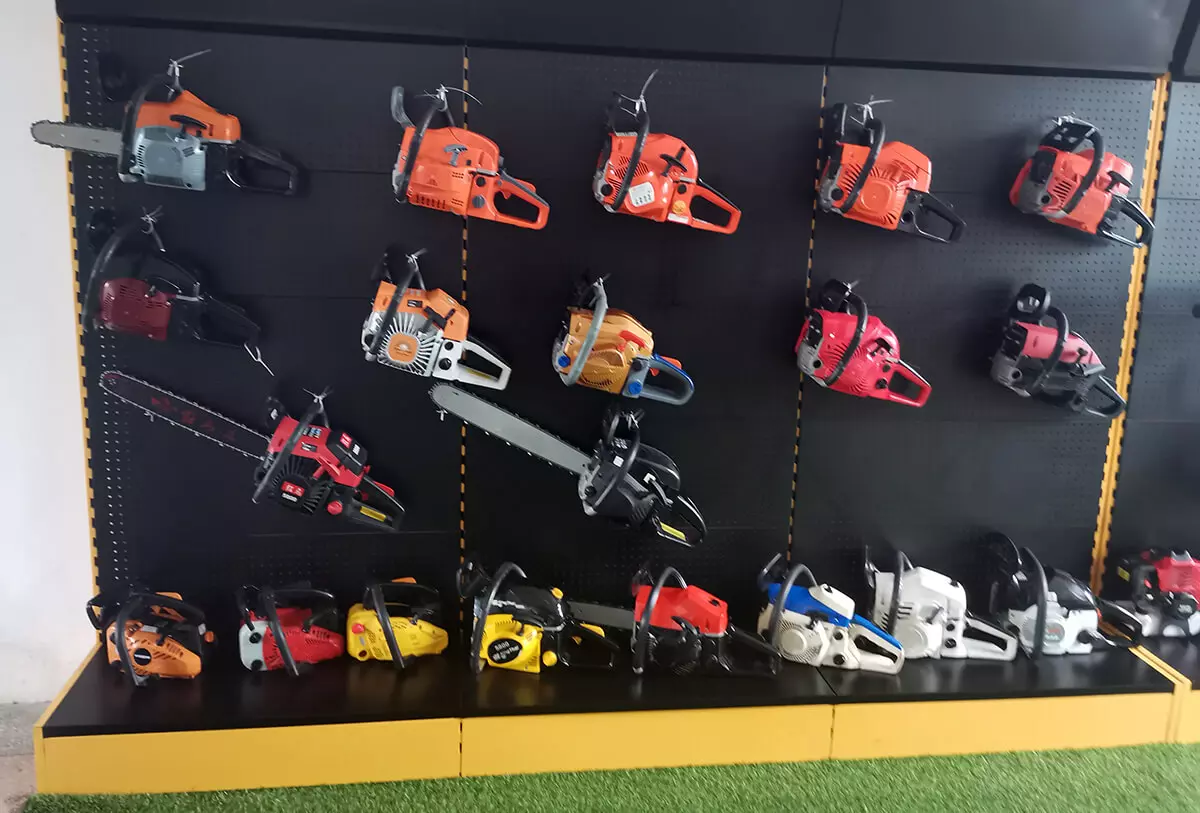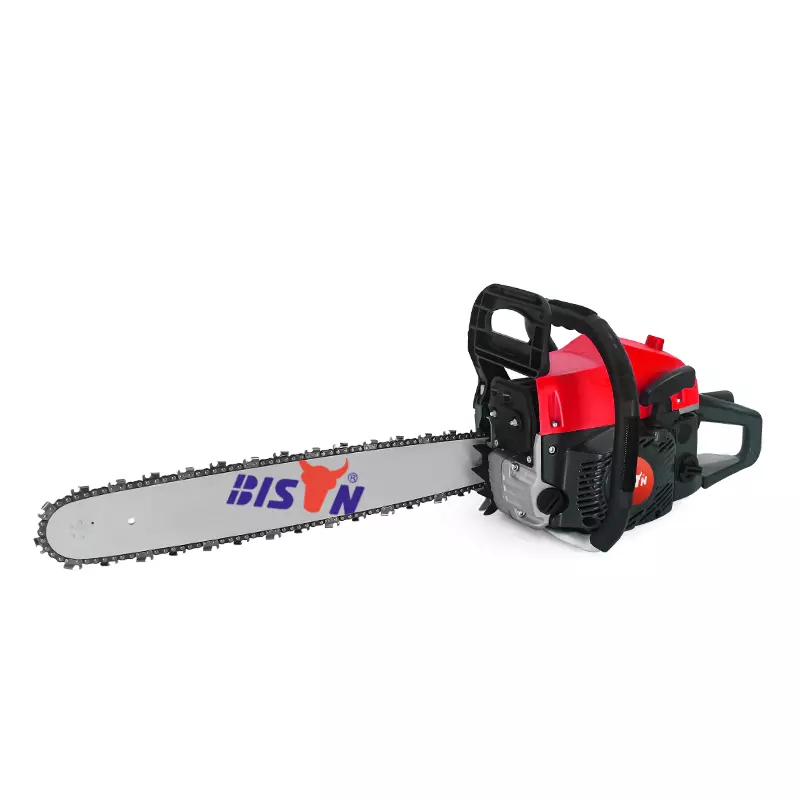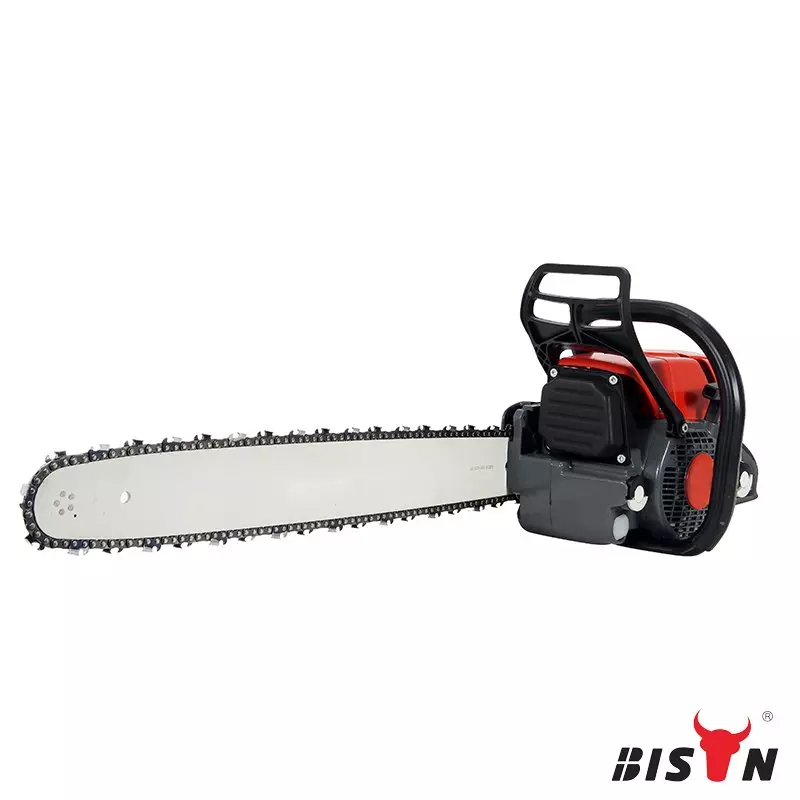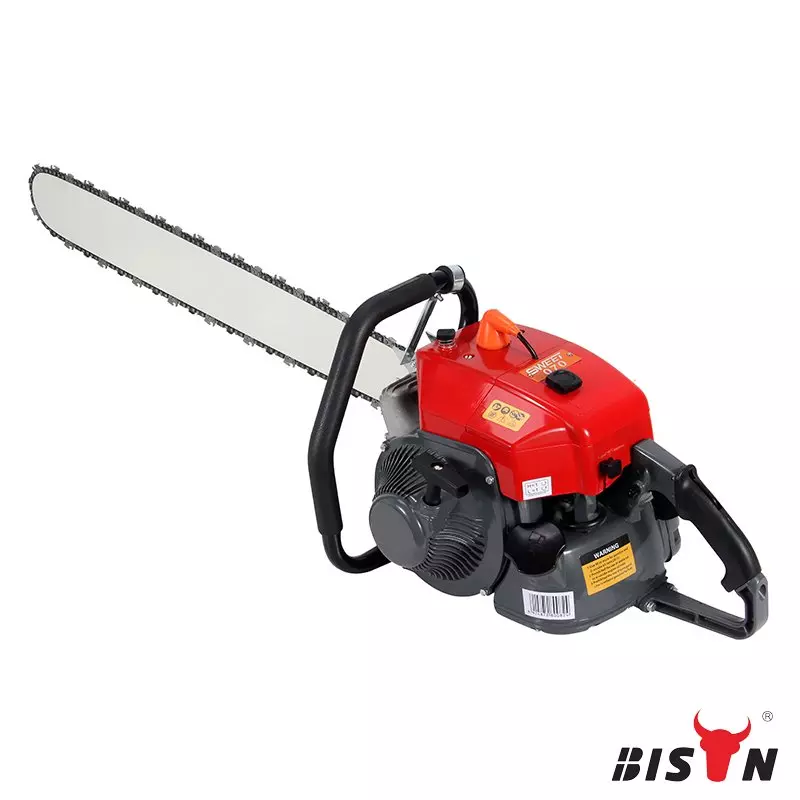step-by-step guide to cut down trees with a chainsaw
2023-11-29
Table of content
Whether urban or rural, there are instances where tree felling becomes a necessity. This could be due to a tree posing risks to structures, obstructing views, or simply because it's diseased or dead. In such cases, a chainsaw, when used correctly, can be an invaluable tool.
But before you go out and start cutting trees yourself, it's essential to know how to cut down trees safely. This article aims to provide you with a step-by-step guide on how to effectively and safely cut down a tree using a chainsaw. BISON will delve into understanding your chainsaw, safety measures to adhere to, assessing the tree, executing the cuts, and cleaning up afterwards.
Equipped with this knowledge, you'll be better prepared to handle your next tree felling task or make an informed decision when hiring professionals. So, let's dive in.
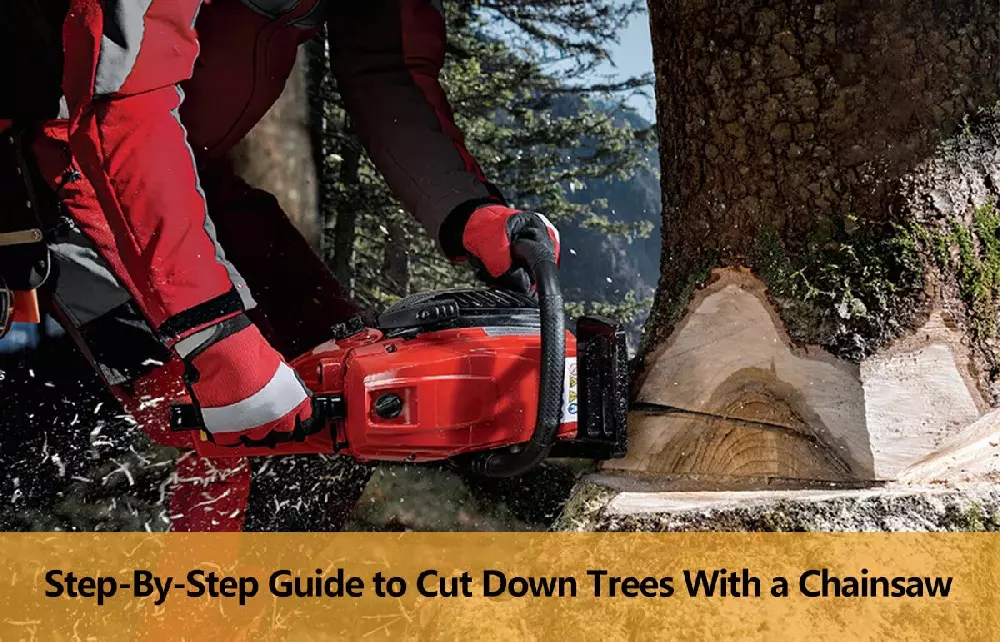
Wear proper safety equipment
Before we delve into the technicalities of tree felling, it's imperative to underscore the importance of Personal Protective Equipment (PPE). Tree felling is a high-risk task, and your safety should always be the first priority. Here's a snapshot of the essential safety gear:
Helmet: A helmet is vital in protecting your head from falling branches. Choose a helmet designed specifically for tree work, ideally with a built-in face shield.
Safety glasses or goggles: These protect your eyes from flying debris during the cutting process. Make sure they are approved for optimal protection.
Ear protection: Chainsaws are loud, and prolonged exposure to their noise can damage your hearing. Use earplugs or earmuffs to mitigate this risk.
Chainsaw chaps: These special trousers are designed to minimize injury in case of accidental contact with the moving chainsaw. Because approximately 35 percent of chainsaw injuries occur on the lower legs and knees
Steel toe boots: A dropped chainsaw or a falling branch can cause severe foot injuries. Steel toe boots provide a hard barrier to protect your feet.
Gloves: Gloves offer protection against cuts and abrasions. Opt for gloves that provide a good grip without compromising dexterity.
Planning and preparation – The prerequisites to tree felling
Before cutting down a tree, you need to have a felling plan—research local environmental regulations to see if a permit is required to cut down trees in your area. You can be fined a hefty amount if you do not comply with local regulations.
Careful planning and preparation are vital. This stage sets the groundwork for a safe and controlled tree felling operation. Here are three critical aspects to consider:
Tree assessment
Begin by evaluating the tree's health, size, and proximity to structures or hazards. Look for signs of disease, decay, or damage that could impact the felling process. Consider the tree's height and diameter to ensure your chainsaw is suitable for the task.
Chainsaws have a recommended cutting capacity range for felling trees. An 18" chainsaw bar can reasonably cut through a 36" diameter tree, which is about twice the length of the chainsaw bar. Larger chainsaws can get more work done with 2.5x the diameter. Most consumer chainsaws have a maximum length of 24 inches, while professional models can reach 42 inches or even longer.
Direction of felling
The natural lean of the tree and the surrounding terrain play a crucial role in determining the optimal direction of felling. A tree will naturally want to fall in the direction of its lean. Then, consider where the tree will fall by evaluating the tree's load and tilt. Determine if it leans to one side or if one side is fuller than the other. If it's leaning or has more branches on one side, it's likely to fall in that direction - but there's no guarantee.
Clearing the area
Before commencing the cut, clear the area around the tree of obstructions, such as rocks, branches, or other potential tripping hazards. Then clear out two escape routes opposite where the tree is probably going to fall so you can exit safely if the tree falls.
Finally, remove any undergrowth around the base of the trunk so that nothing gets in your way as you cut. In general, you should remove all branches less than 6 feet tall from the trunk to avoid broken branches when the tree falls.
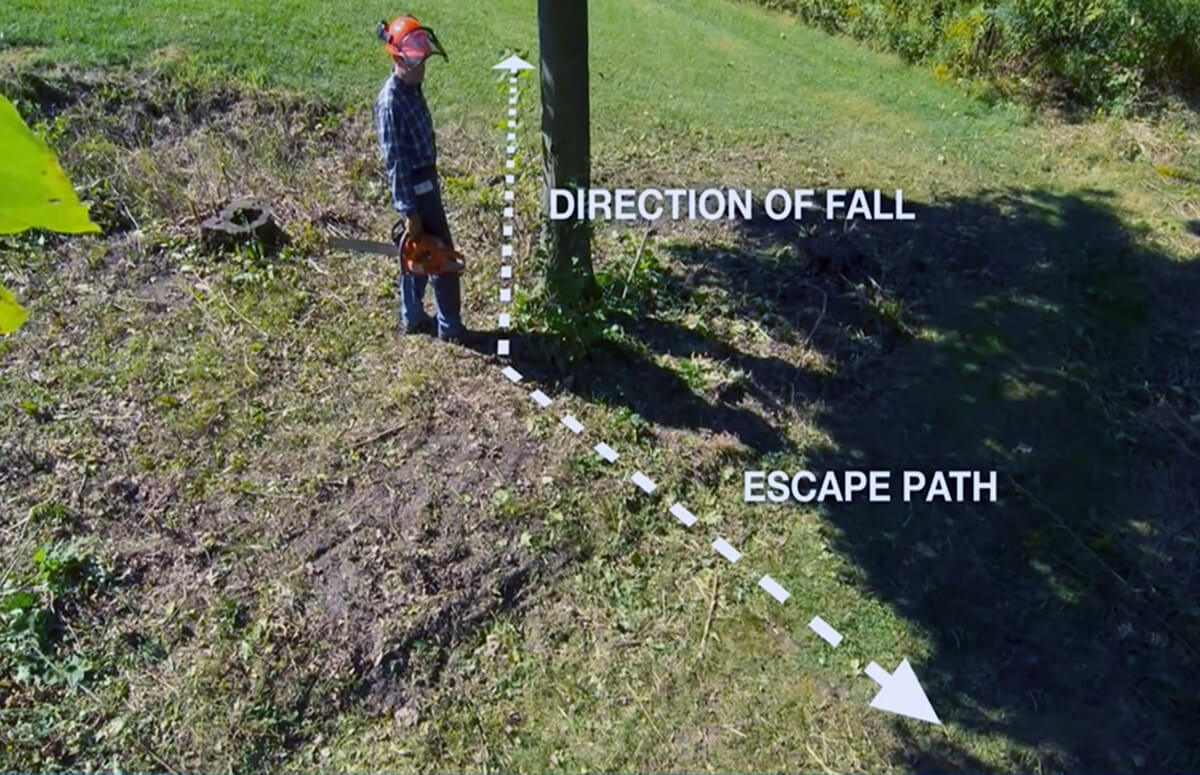
step-by-step guide to felling a tree with a chainsaw
To ensure the safe and efficient felling of a tree, you'll need to make precise cuts and take specific actions. Let's break down this process:
#1 cut a notch to control the fall
This is the first cut you'll make on the tree trunk. Its purpose is to determine the direction in which the tree will fall. There are three types of tree cuts commonly used when felling trees. They are conventional notch, open-notch and humboldt notch.
Important things to remember:
Always make the first cut on the side of the tree in the direction you want the tree to fall.
Cutting depth is essential: never cut too deep into the tree. The depth of the notch should be about one-fifth of the tree's diameter. Keep the notch height below 4 feet if possible.
Take your time and pay attention to your cuts, to ensure that it will crack under the weight of the felling.
How to make a conventional notch cut?
A conventional notch cut works much the same as an open-face notch cut but with a smaller cut angle. This type of cutting is suitable for trees that split easily because the angle is less, and the cut breaks off earlier.
To make a conventional notch cut, tilt the saw and make a downward 45° cut, stopping about a fifth up the tree. Then simply rotate the saw horizontally and slowly cut inward, meeting the end of the first cut. You need to be able to remove a wedge from the tree, leaving a notch about one-fifth of the way down the trunk.
How to make an open-notch cut?
The open notch cut has high safety, and the use angle is between 70-90 degrees. This notch starts with a single angled cut through a fifth of the trunk to control the fall and mark your intended direction. This option is ideal for trees on flat or gently sloping terrain. Other advantages include the notch remaining intact until the tree finally hits the ground, reducing the potential for hazards from kickback.
To make an open notch cut, tilt the saw and make a 60° angled cut down, stopping one-fifth of the way up the tree. Then rotate the saw horizontally or at a slight upward angle and cut inward, meeting the end of the first cut. You must be able to remove a wedge from the tree, leaving a notch about one-fifth of the way down the trunk.
How to make a humboldt notch cut?
The humboldt notch cut reverses the angle of the cut. It has become a safe, effective method of felling trees on steep slopes or uneven terrain because of the much higher downward projection angle. It is also particularly effective against dense trees.
To make a humboldt notch cut, use a chainsaw for a one-fifth depth horizontal cut in the tree. Then, make a 45° angle cut from the bottom up to meet the end of the first cut. You should be able to remove the wedge from the tree, leaving a notch approximately one-fifth of the way down the trunk.
#2 make your back cut
Now that your notch is done, move to the other side of the tree and make the back cut. This back cut is called "felling cut," so remember that doing it will cause the tree to fall.
Start cutting slightly higher than the apex of the notch, and cut towards the apex at a slightly downward angle. This will avoid the tree from falling or slipping in the wrong direction.
You should keep going until the tree starts falling, or about a half inch before you reach the apex, then move away and let the tree fall. Your lookout should alert you to fallen branches and let you know when the tree starts to fall.
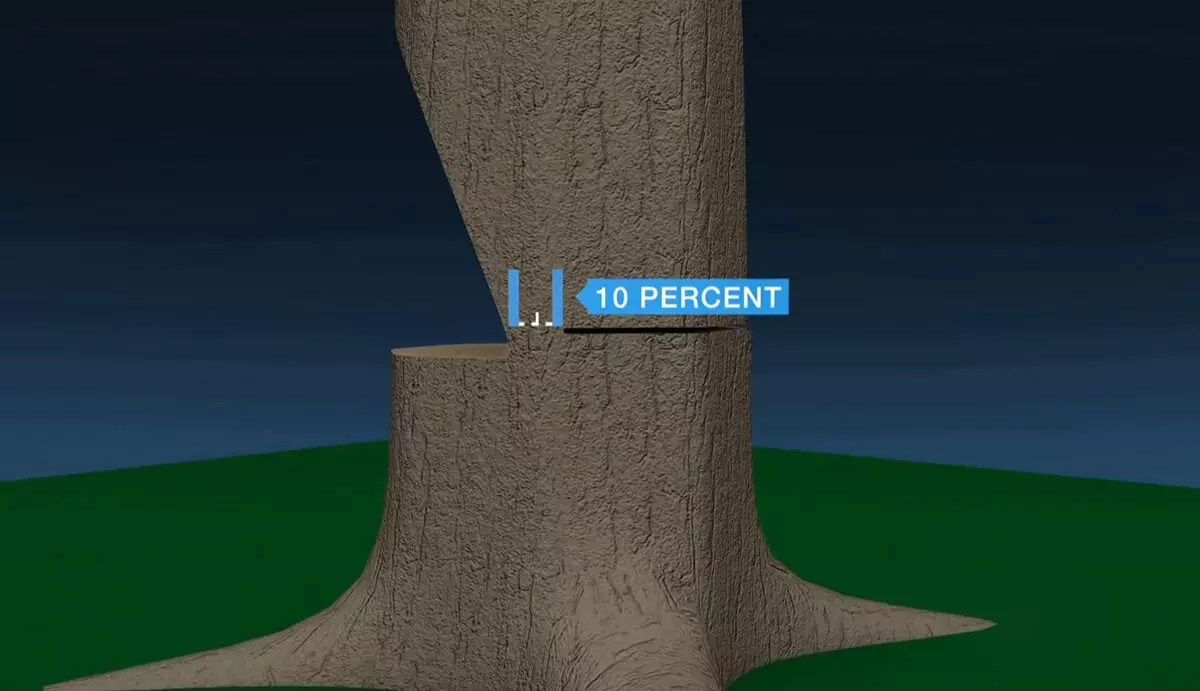
#3 use a felling wedge
Sometimes, even after making the back cut, the tree may not start to fall immediately. In these instances, using wedges or levers in the back cut can help guide the tree to fall in the desired direction. Always remember to stay clear of the falling tree and keep an eye out for potential hazards.
#4 limbing and bucking
After the tree has been safely felled, the process of 'limbing' (removing branches) and 'bucking' (cutting the trunk into sections) begins. Always start from the base moving upwards for limbing. For bucking, cut the log into manageable sections, but be cautious of tension in the wood that could cause the chainsaw to kick back. Cutting from smaller branches to larger branches or from the outside to the inside will be easier. Identify the side under tension for the entire trunk and start cutting from the other side.
Finally, properly dispose of the tree debris according to local regulations. Some areas may allow burning, while others may require hauling to a designated location.
Safety - The paramount consideration in tree felling
In keeping with BISON's commitment to imparting knowledge and promoting safe practices, it's essential that we reiterate the importance of safety during the entire tree felling process. Operating a chainsaw and felling trees are tasks that demand skill, precision, and a deep understanding of safety guidelines:
Never attempt to use a chainsaw without proper training.
As outlined earlier, PPE is vital for your protection while operating a chainsaw.
For large or hazardous trees, seeking the help of a professional arborist is highly recommended.
Choose late winter and early spring, when tree is lightest. Without the leaves, it would be much easier to remove the branches.
In conclusion
BISON products are designed to empower you, but they must be used responsibly and safely. We implore you to respect the power of your chainsaw, adhere to safety guidelines, and always prioritize your wellbeing above all else.
By following the guidelines outlined in this guide, you can equip yourself to handle this challenging task responsibly. Each step is vital in ensuring successful and accident-free tree removal, from assessing the tree and surroundings to selecting the proper equipment.
